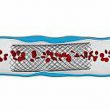This prospective randomized study compared aggressive revascularization angiography injuries 50% versus a most conservative revascularization lesions>70%.The primary end point was death, myocardial infarction and recurring revascularization. We included a total of 889 patients (449 in the aggressive revascularization group and 450 in the conservative revascularization group).No differences in major cardiac events between the two groups...
CHILL-MI: Hypothermia fails to show benefit in patients with acute ST- elevation IAM.
Hypothermia improves myocardial ischemia in animals but studies in humans failed to demonstrate benefit to that extent.We admitted 120 patients experiencing anterior-posterior STEMI with up to 6 hours after onset, randomized to conventional invasive therapy versus conventional invasive therapy associated with hypothermia. The primary endpoint was infarct size by MRI at 4 days.There was no...
TRYTON: Stent dedicated to bifurcations fails to demonstrate non-inferiority when compared with provisional
The aim of this study was to compare the results of stent TRYTON (non-drug eluting) in the side branch associated with the implantation of a drug-eluting stent in the main branch compared to the drug-eluting stent implantation in the main branch with provisional stent technique.704 patients were included with the intention of demonstrating non-inferiority versus...
Hokusai-VTE: Endoxaban shows solid results versus warfarin in venous thromboembolism .
The venous thromboembolism is the third most common cardiovascular disease after acute myocardial infarction and stroke . Usual treatment is to use low molecular weight heparin followed by vitamin K antagonists Other studies have shown that the new oral anticoagulants with or without initial heparin are effective alternatives. The endoxaban is a direct Factor Xa...
RE-ALIGN: Dabigatran in mechanical valves. Suspended early due to more bleeding and thrombotic events.
The use of vitamin K antagonists provides excellent protection against thromboembolic complications in patients with mechanical valves, however long-term INR monitoring is needed. Dabigatran is an oral direct thrombin inhibitor which was shown to be effective in patients with atrial fibrillation. Based on these promising results this study was designed to evaluate its use in...
TASTE: Thrombus aspiration in primary angioplasty failed to show benefits at 30 days
The clinical benefit of thrombus aspiration during angioplasty in patients with ST-segment elevation myocardial infarction is uncertain. The purpose of this work was to test if thrombus aspiration reduces mortality. This was a multicenter, prospective, randomized and controlled study that included patients with ST-segment elevation myocardial infarction within 24 hours of evolution. The catheters used...
EXAMINE: The alogliptin is safe for treating type 2 diabetes in patients with a recent history of acute coronary syndrome.
Type 2 diabetes is associated both microvascular and macrovascular disease. Adequate glycemic control can reduce the risk of many microvascular complications but have not shown the same effect on macrovascular complications. This study evaluates the results of alogliptin compared with placebo in patients with type 2 diabetes who had a recent acute coronary syndrome. The...
SAVOR-TIMI 53: Saxagliptin showed no cardiovascular benefit
The cardiovascular safety and efficacy of some hypoglycemic including saxagliptin (Onglyza), an inhibitor of dipeptidyl peptidase 4 (DPP-4), is not well established. 16492 patients were randomized diagnosed with type 2 diabetes with a history of cardiovascular events or high risk to receive saxagliptin or placebo. Other medications for diabetes, including hypoglycemic, were permitted. The combined...
2nd-generation drug-eluting stents, results for “real” patients at two years
Original title: Clinical Outcome Following Stringent Discontinuation of Dual Anti-Platelet Therapy After 12 Months in Real-World Patients Treated With Second-Generation Zotarolimus-Eluting Resolute and Everolimus-Eluting Xience V Stents: Two-Year Follow-up of the Randomized TWENTE Trial. Reference: Keneth T, Hanim S, et al. J Am Coll Cardiol 2013. Article in press. In recent years there have been new drug-eluting...
PCI vs. CABG in patients aged under 50 years
Original title: Comparison of 30-Day and 5-Year Outcomes of Percutaneous Coronary Intervention Versus Coronary Bypass Grafting in Patients Aged ≤50 Years. Reference: Fausto Biancari, et al. Am J Cardiology Article in Press. Coronary artery bypass grafting (CABG) is associated with better evolution than percutaneous coronary intervention (PCI), mainly due to left main and multiple vessels re...









